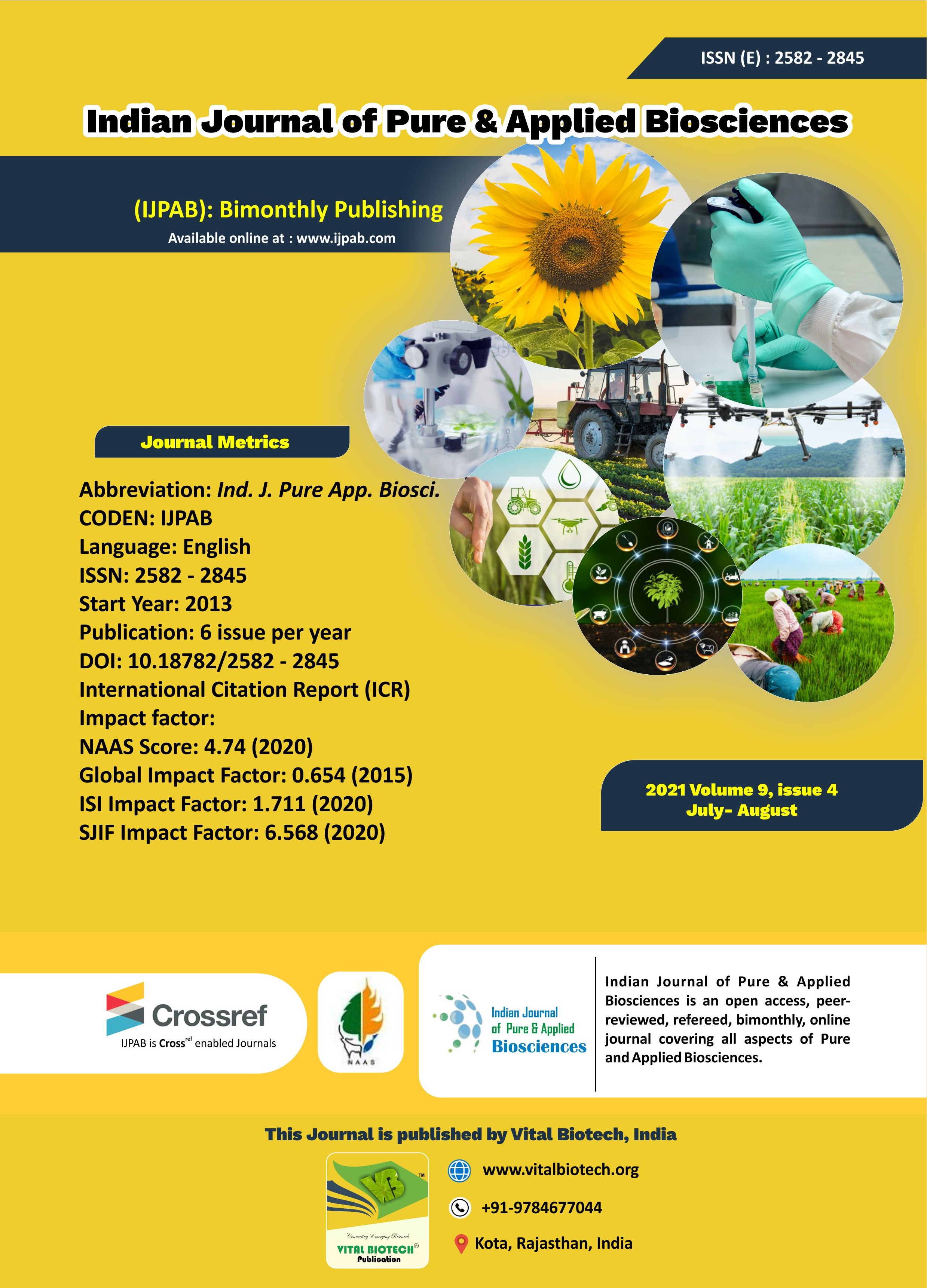-
No. 772, Basant Vihar, Kota
Rajasthan-324009 India
-
Call Us On
+91 9784677044
-
Mail Us @
editor@ijpab.com
Indian Journal of Pure & Applied Biosciences (IJPAB)
Year : 2021, Volume : 9, Issue : 4
First page : (192) Last page : (198)
Article doi: : http://dx.doi.org/10.18782/2582-2845.8775
Management of Foliar Fungal Diseases of Soybean through Chemicals and Its Impact on Yield
R. K. Sharma*, M. M. Patel, D. R. Patel, D. R. Chaudhari and V. Kumar
Agricultural Research Station, Sardarkrushinagar Dantiwada Agricultural University
Ladol, Mehsana, Gujarat, India – 384540
*Corresponding Author E-mail: rksharmampp@gmail.com
Received: 8.07.2021 | Revised: 11.08.2021 | Accepted: 17.08.2021
ABSTRACT
The efficacy of some combination fungicides like pyraclostrobin 13.3% + epoxiconazole 5% SE, carbendazim 12% + mancozeb 63% WP along with commonly used systemic fungicides viz., hexaconazole 5% EC, difenoconazole 25% EC, propiconazole 25% EC, pyraclostrobin 20% WG and kresoxim-methyl 44.3% SC were tested against foliar fungal diseases in soybean using susceptible cv. NRC-37 at Agricultural Research Station, Ladol, Gujarat.All the fungicide treatments reduce the disease intensity significantly as compared to untreated check.Observations on PDI of both the diseases (Alternaria leaf spot and Cercospora leaf spot) of soybean were recorded periodically at 60, 75 and 90 days after sowing with consecutive three sprays of fungicides at 15 days interval (before and after seven days of spray) and was found low to moderate in range (9.70 - 36.53 per cent).In case of Alternaria leaf spot, the minimum per cent disease intensity (PDI, 23.11%) was recorded (after seven days of third spray) in the treatment T6 (pyraclostrobin 13.3% + epoxiconazole 5% SE @ 0.01%) and it was at par with the treatment T1 (hexaconazole 5% EC @ 0.005%)and T5 (kresoxim-methyl 44.3% SC @ 0.05%) with its PDI 23.75 and 24.78 per cent, respectively.Whereas, in case of Cercospora leaf spot, the minimum per cent disease intensity (PDI, 24.75%) was also recorded (after seven days of third spray) in the treatment T6 and it was at par with the treatment of T1 with its PDI 26.55 per cent as compared to untreated check. Similarly, the highest yield of soybean grains was recorded in T6 against foliar fungal diseases (ALF & FLS) with 1640 kg/ha followed by T1and T5 with its yield 1494 kg/ha and 1417 kg/ha, respectively.Thus, it can be said that combination of such systemic, protective fungicides may be effectively had suppression of pre as well as post-infection activity with its unique mode of action (block the energy supply of the fungus & stop the development of cell membrane) and inhibited sporulation and/or restricted lesion expansion of foliar fungal pathogens. Also found not only to manage leaf spots but increase in the grain yield of soybean as well.
Keywords:Soybean,Alternaria leaf spot, Cercospora brown leaf spot or Frog-eye leaf spot,Fungicides,pyraclostrobin 13.3% + epoxiconazole 5% SE, Percent Disease Intensity and management.
Full Text : PDF; Journal doi : http://dx.doi.org/10.18782
Cite this article: Sharma, R.K., Patel, M.M., Patel, D. R., Chaudhari, D.R., & Kumar, V. (2021). Management of Foliar Fungal Diseases of Soybean through Chemicals and Its Impact on Yield, Ind. J. Pure App. Biosci. 9(4), 192-198. doi: http://dx.doi.org/10.18782/2582-2845.8775


